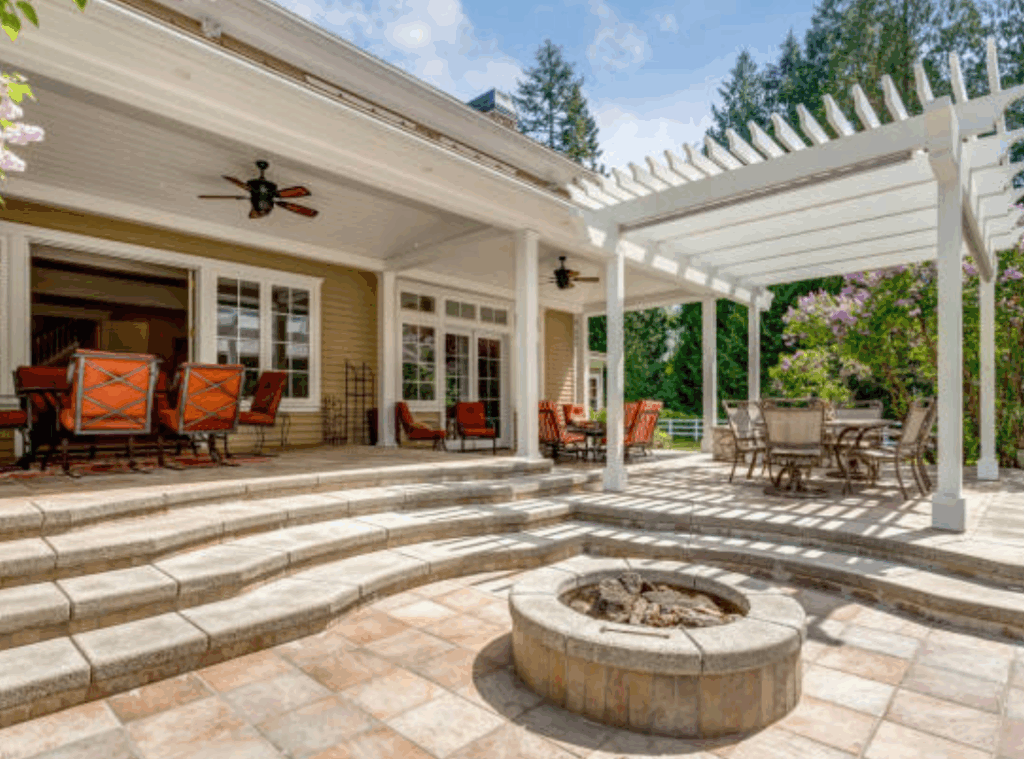In recent years, homeowners have increasingly turned their attention to making the most of their yards and gardens, transforming them into livable extensions of the home. Multi-level outdoor spaces have emerged as one of the most practical and visually dynamic solutions to maximize functionality and design appeal. By incorporating multiple elevations, homeowners can define different areas for dining, relaxation, gardening, or recreation—each offering a distinct atmosphere. This layered approach not only enhances usability but also adds value to the property. Thoughtful planning and creative design are essential to ensure each level flows naturally, supporting both aesthetics and practical needs.
Understanding the Benefits of Multi-Level Design
Creating outdoor spaces with multiple levels offers a range of advantages. First, it helps in managing uneven terrain, especially in hilly or sloped backyards, by turning potential obstacles into beautiful features. Second, it allows for clear zoning, differentiating entertainment areas from quiet retreats or play zones for children. Each level can serve a specific purpose, contributing to a more organized and enjoyable outdoor experience. Additionally, the elevation changes add visual interest, making the landscape feel more dynamic and engaging. With the right design, multi-level layouts also improve traffic flow, making your yard feel larger and more accessible.
Planning and Permits: The Foundation for Success
Before breaking ground, thorough planning is essential. Assess your property’s topography, sun exposure, and natural features. Understanding these elements helps in determining where each level should be placed for optimal usability and appeal. Be sure to check local zoning regulations and building codes, as some projects may require permits or inspections, especially when involving structures like retaining walls or decks. Consulting with professionals like landscape architects or designers is highly recommended to ensure the final layout is not only beautiful but also structurally sound. Investing time in planning now will save time, money, and stress later in the process.
Seamless Integration with Existing Architecture
One of the most crucial aspects of designing multi-level outdoor spaces is ensuring they complement your home’s architectural style. Transitions between levels should feel natural, whether you’re using steps, retaining walls, or gentle slopes. Material choices—such as natural stone, wood, or concrete—should align with your home’s aesthetic and color palette. This creates a harmonious flow between indoor and outdoor living areas. For example, if your home has a rustic feel, using timber decking or stone pavers can enhance continuity. Moreover, integrating cohesive lighting and railing systems adds both safety and style to your outdoor structure.
Design Ideas for Functional Zones
When designing multi-level outdoor spaces, consider how you will use each area. A common layout includes a dining area adjacent to the house for easy kitchen access, a sunken fire pit lounge for evening gatherings, and an elevated garden or lawn for children and pets. Built-in seating, planters, and water features can help define each level while adding practical and aesthetic value. Incorporating shade structures such as pergolas or umbrellas can also enhance comfort. For homeowners exploring complete transformations, companies like Markdale Home Renovation Services can offer expert insight and execution tailored to your outdoor vision and landscape needs.
Hardscaping and Material Selection
Hardscaping—the non-plant elements of your landscape—plays a central role in shaping outdoor spaces. Choosing durable, weather-resistant materials for stairs, walls, and patios ensures longevity and ease of maintenance. Popular options include flagstone, interlocking pavers, treated wood, and composite decking. Each material offers a different texture and visual tone, allowing you to personalize your space. Services like Blue Mountains exterior renovations often emphasize the importance of selecting materials that balance aesthetics with function, especially in regions with variable weather. It’s also important to consider drainage and erosion control when designing multiple levels, especially on sloped properties. Strategic use of gravel beds, retaining walls, and proper slope gradients will help prevent water pooling and structural damage over time.
Softscape Features to Add Warmth
While hardscaping defines the structure, softscaping—plants, trees, and greenery—brings life to outdoor spaces. Incorporate layers of foliage to match your levels, using low-maintenance, native plants that thrive in your local climate. Raised planters and terraced garden beds can soften hard edges and create a lush, inviting environment. Consider seasonal interest when selecting plants so that your space remains visually appealing year-round. Including flowering shrubs, ornamental grasses, and ground cover can enhance both privacy and ambiance. Landscape lighting further highlights softscape features and improves nighttime usability, casting shadows and depth across the different tiers of your yard.
Incorporating Lighting for Ambiance and Safety
Outdoor lighting is both functional and decorative. It enhances safety by illuminating steps, paths, and edges while creating a warm, inviting atmosphere. Use a mix of solar-powered path lights, LED deck lights, and low-voltage uplighting to accentuate key areas without overwhelming the space. Smart lighting systems can also be installed for easy automation and control. Lighting should be subtle and strategically placed to avoid harsh glares or shadows. By layering light sources, you ensure each level of your outdoor space is both beautiful and usable during the evening, extending the functionality of your yard into nighttime hours.
Sustainability and Eco-Friendly Options
As environmental awareness grows, many homeowners seek sustainable choices for their outdoor spaces. Permeable pavers, recycled materials, and solar lighting are excellent eco-conscious options. Incorporating rain gardens or bioswales on lower levels can help manage runoff and replenish groundwater. Native and drought-resistant plants reduce the need for irrigation, conserving water while supporting local ecosystems. Composting areas and vertical herb gardens are other ways to make your landscape more sustainable. By thoughtfully incorporating green practices into your multi-level design, you can enjoy a beautiful space that aligns with environmental values and reduces long-term maintenance.
Maintenance and Longevity
Multi-level outdoor spaces, while stunning, require regular upkeep to remain safe and attractive. Seasonal maintenance includes checking for erosion, cleaning drainage systems, resealing wood surfaces, and pruning plants. Choosing quality materials and professional installation can greatly reduce long-term issues. Creating a maintenance checklist tailored to your specific setup helps you stay on top of routine care. Investing in weather-resistant finishes and protective coatings ensures that decks, furniture, and lighting fixtures hold up over time. With a little care, your outdoor retreat will remain a functional and welcoming part of your home for years to come.
Final Thoughts
Creating multi-level outdoor spaces is a smart way to expand and enrich your living environment. By thoughtfully planning your layout, selecting durable materials, and incorporating personal touches, you can craft a space that is both functional and visually stunning. From sunrise breakfasts on a garden terrace to evening chats by a fire pit, each level offers a unique setting for everyday life. Whether you’re enhancing a modest yard or transforming a large property, multi-level design turns ordinary outdoor areas into extraordinary living spaces, reflecting your lifestyle, maximizing your property, and elevating your outdoor enjoyment.





